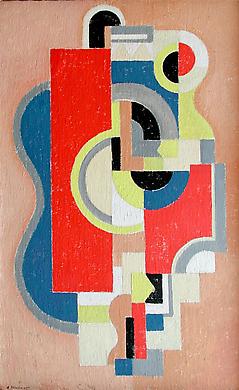This important exhibition at Hanina Fine Arts celebrates the historic achievements of the Abstraction-Création group, 1931-1936, which was responsible for producing the decisive wave of Abstract art that finally established pure Abstraction as a viable form of art in Western culture.
After the First World War previous non-figurative developments were discarded, and there was a return to figuration in an effort to regain a sense of stability in society, and this cynical opposition towards non-figurative art remained dominant throughout the twenties.
In 1929 Joaquin Torrès-Garcia and Michel Seuphor founded the Cercle et Carré group which brought together artists who still believed in abstract art, and in 1930 Theo Van Doesburg published his Manifesto of Concrete Art. But despite there efforts, these groups struggled to gain recognition, until 1931 when Auguste Herbin united the abstract cause by founding Abstraction-Création, an assertive campaign of international avant-garde exhibitions and publications that would finally overcome the European resistance to this new form of art.
Based in the back courtyard off the Avenue de Wagram in Paris, its members initially included artists such as Herbin, Valmier, Arp, Reth, Vantongerloo, Kupka, Leuppi, Bill, Delaunay, Gleizes, Charchoune, and by 1936 there were 400 members internationally that included British artists Barbara Hepworth and Ben Nicholson. By this time war was again on the horizon and Europe in the depths of economic depression so inevitably the group was disbanded. But its accomplishments had already succeeded in influencing the course of history by convincing society of the value of Abstract art.
After the Second World War the group’s legacy re-emerged at the same venue which again became the bastion of the avant-garde as the location for the Salon des Réalités Nouvelles which was highly influential in promoting post-war Abstraction.

